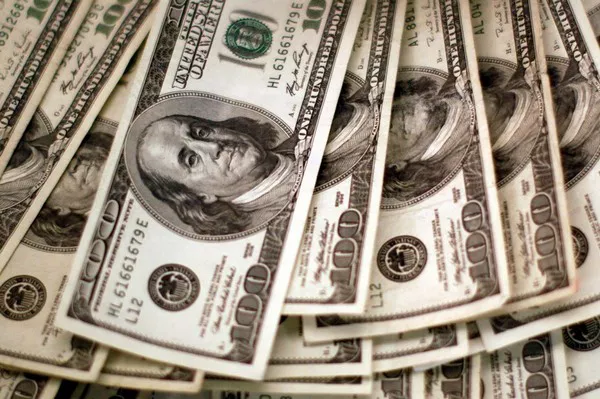The value of a country’s currency is one of the most pivotal aspects influencing its economic health and global trade dynamics. When the U.S. dollar appreciates, or “rises,” relative to other currencies, a wide array of economic effects cascade both domestically and internationally. This article delves into the multifaceted impacts of a stronger dollar, exploring its implications on trade, investment, inflation, and the global economy.
The Mechanics Behind a Rising Dollar
The value of the U.S. dollar is primarily determined by the foreign exchange (forex) market, where currencies are traded. The dollar’s value increases when demand for it rises or when the supply of other currencies decreases. Several factors can drive this appreciation:
Interest Rates: Higher interest rates in the United States attract foreign capital seeking higher returns, increasing demand for the dollar.
Economic Performance: A robust U.S. economy can enhance investor confidence, driving investments into dollar-denominated assets.
Geopolitical Stability: The U.S. is often seen as a safe haven during global uncertainties, boosting the dollar.
Trade Balances: A reduction in the U.S. trade deficit or a shift towards a trade surplus can strengthen the dollar.
Trade and Export Dynamics
One of the most immediate effects of a rising dollar is its impact on trade. A stronger dollar makes U.S. goods and services more expensive for foreign buyers. This can lead to several outcomes:
Reduced Export Competitiveness: U.S. exporters may find it harder to compete in global markets, as their products become more expensive compared to those from countries with weaker currencies. This can result in a decline in export volumes, potentially hurting sectors reliant on international sales such as manufacturing and agriculture.
Increased Import Volumes: Conversely, imports become cheaper for U.S. consumers and businesses. While this can benefit consumers through lower prices and more variety, it can adversely affect domestic industries that compete with imported goods, potentially leading to job losses in those sectors.
Impact on Inflation
The relationship between a rising dollar and inflation is nuanced:
Deflationary Pressure: A stronger dollar reduces the cost of imported goods and services. This can lower overall price levels, contributing to lower inflation or even deflation. For consumers, this translates to cheaper goods, from electronics to clothing.
Monetary Policy Considerations: The Federal Reserve, the U.S. central bank, closely monitors inflation. If the dollar’s appreciation leads to significantly lower inflation, the Fed may adjust its monetary policy, potentially delaying interest rate hikes to avoid deflationary risks.
Investment Flows
A rising dollar also influences investment patterns in several ways:
Attraction of Foreign Investment: Higher returns and safer investment environments in the U.S. can attract more foreign direct investment (FDI) and portfolio investments. This influx of capital can spur economic growth, increase employment, and enhance technological development.
Outflows from Emerging Markets: Emerging markets often suffer when the dollar strengthens. Investors may pull out capital from these markets to seek better returns in the U.S., leading to depreciation of local currencies, increased debt burdens (as many emerging market debts are dollar-denominated), and potential financial instability.
Corporate Earnings and Stock Markets
The performance of U.S. multinational corporations and the stock market can also be significantly impacted by currency fluctuations:
Earnings Translations: For U.S. companies with substantial international operations, a stronger dollar means that revenues earned abroad are worth less when converted back into dollars. This can dampen earnings reports and negatively impact stock prices.
Stock Market Volatility: Currency fluctuations add another layer of volatility to stock markets. Companies dependent on exports or with significant foreign operations may see their stock prices fluctuate more with changes in the dollar’s value.
Debt and Borrowing Costs
The global financial system is deeply interconnected with the dollar. Many countries and corporations borrow in dollars due to its stability and global acceptance. A rising dollar can make these debts more burdensome:
Increased Debt Servicing Costs: When the dollar strengthens, the cost of servicing dollar-denominated debt increases for foreign borrowers. This can lead to financial stress, higher default risks, and economic instability in heavily indebted countries and companies.
Domestic Borrowing Costs: Within the U.S., a stronger dollar can lead to lower borrowing costs, as inflationary pressures ease and interest rates might remain lower for longer.
Global Economic Ramifications
The dollar’s role as the world’s primary reserve currency means its fluctuations have profound global implications:
Global Trade Imbalances: As the dollar rises, countries with weaker currencies may struggle to maintain trade balances. This can exacerbate trade imbalances, leading to economic strains and protectionist measures.
Policy Responses: Central banks and governments around the world may need to adjust their policies in response to a stronger dollar. This could include interventions in forex markets, adjustments to interest rates, or changes in fiscal policies to stabilize their economies.
See also How Many Presidents Are On The Dollar Coin
Conclusion
The appreciation of the U.S. dollar is a complex phenomenon with widespread implications. While it can benefit U.S. consumers through lower prices and attract investment due to higher returns, it also poses challenges for exporters, multinational corporations, and global borrowers with dollar-denominated debts. The ripple effects of a stronger dollar extend far beyond the U.S. borders, influencing trade balances, inflation, and economic stability worldwide.
Understanding these dynamics is crucial for policymakers, businesses, and investors alike, as they navigate the intricate web of economic relationships shaped by currency movements. The global economy’s interconnected nature means that a rising dollar can set off a chain reaction of economic events, necessitating careful monitoring and strategic responses to maintain economic stability and growth.


